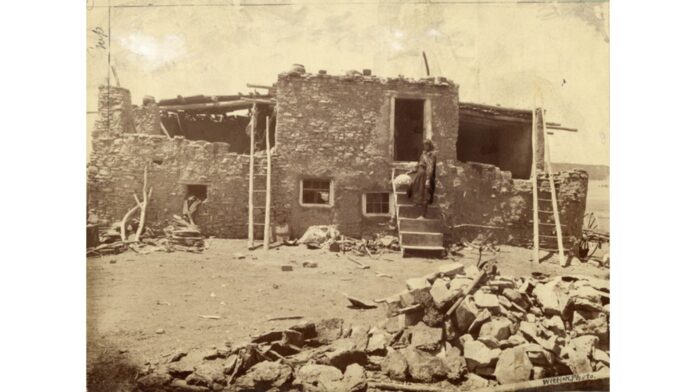
The LGBTQ+ community has been around forever, from ancient times to today. However, the further one goes back in time, the harder it is to find evidence of what the lives of those past LGBTQ+ people were like, and how their culture treated them.
Soon after Thomas Delfi went to work in the development department of the Penn Museum, it occurred to him that this could make for an interesting subject for discussion for patrons of the Penn Museum. Since Delfi has a background as a professional historian, he felt that a historical overview of LGBTQ+ people’s place in past culture would be a logical and interesting place to start.
Delfi eventually approached several academic experts in history and archeology. The response was immediately positive and enthusiastic. This was the genesis of the panel lecture titled “They Were Roommates,” which will be hosted by Penn Museum on Oct. 22.
The panel lecture will be conducted by three prominent historians associated with the Penn Museum: Dr. C. Brian Rose, curator of the Mediterranean section; Dr. Jonathan D. Katz, Associate Professor of Practice in the History of Art and Gender, Sexuality and Women’s Studies at Penn; and Dr. William Wierzbowski, Keeper of the American Collection at the Penn Museum.
One of the major challenges facing historians researching LGBTQ+ history is the fragmentary nature of what has survived of the written record of ancient cultures. Even more difficult is that cultures of North American indigenous people do not have a written record, as they did not have a written language. Complicating this challenge is the fact that much of what survived was edited or reinterpreted according to the Christianized sensibilities of late scholars and educators.
Despite these obstacles, historians have been able to piece together a picture of what life was like in many ancient cultures for LGBTQ+ people, and likewise, how those cultures treated them.
One interesting fact that has come to light is how many ancient cultures integrated LGBTQ+ people into their societies, even to levels of high status, especially in hypermasculine militaristic or warrior cultures. The most well-known example of this was in ancient Greece, for instance Thebes’ famous — and feared — “Army of Lovers,” composed entirely of gay couples.
Another example was among North American aboriginal tribes where the concept of the “two-spirit people” held sway. Two-spirit people, male or female, were often held in high regard as they were believed to possess potent healing powers. They were often invited to accompany warriors into battle. Warriors were even sometimes allowed to marry two-spirit people to avail themselves of their power and status.
According to Dr. Wierzbowski, who has been studying the two-spirits aspect of several North American tribes, particularly the Lakota (Sioux) nation, while the tribes did not have a written language, they did have an artistic language and an oral tradition, some of which survived into the 19th century. It was during this time that historians, anthropologists and photographers began documenting these materials, from which historians like Dr. Wierzbowski have been able to piece together a picture of LGBTQ+ lives in those pre-modern cultures.
Among the photos in the Archives at the Penn Museum is one of the Zuni Two-Spirit We’wha (1849-1896), which was taken by American photographer Ben Wittick in 1890. It was published in the “Eleventh Census of the U.S. 1890 Taxation of Indians” with the title “Home of We-wa the Zuni Princess.” In 1886, We’wha was hosted in Washington DC by the anthropologist Matilda Stevenson and became the toast of the town, meeting President Grover Cleveland among many other prominent Washingtonians.
While “They Were Roommates’ will focus primarily on the Mediterranean and North America, Delfi has hope that response to this lecture will spur future lectures, which will be able to focus on Asia and Africa.
Delfi should have little cause for concern. As of this writing “They Were Roommates” is rapidly approaching a sell-out. Not surprising — LGBTQ+ people love their community’s history.
“They Were Roommates” is being co-sponsored by the Penn Museum, Penn’s History of Art program, and the University of Pennsylvania’s LGBT Center. It will take place 2-3:30 p.m. Oct. 22 at the Penn Museum, 3260 South St. For information on ticket availability, call 215-898-4000 or visit www.penn.museum.